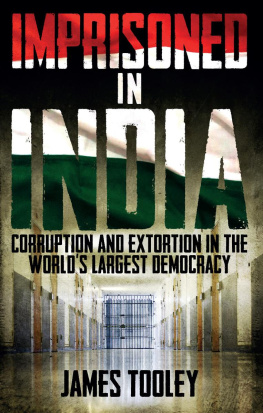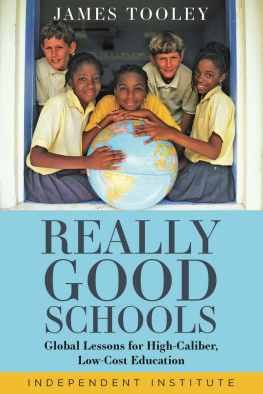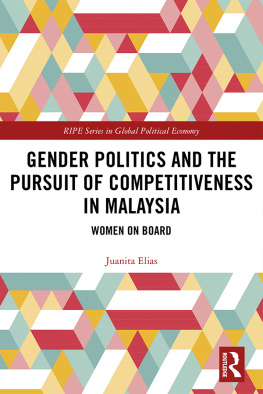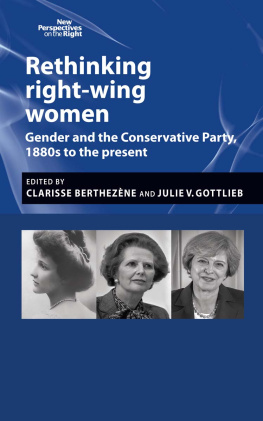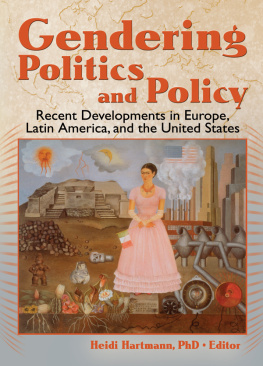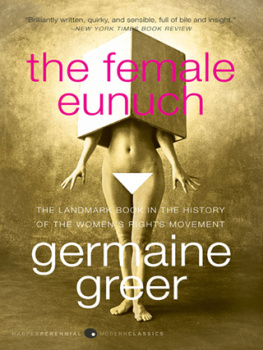The Miseducation of Women
THE MISEDUCATION
OF WOMEN
James Tooley

To my sister, Rachel, with much love and some trepidation.
THE MISEDUCATION OF WOMEN. Copyright 2002, 2003 by James Tooley. All rights reserved, including the right to reproduce this book or portions thereof in any form. For information, address: Ivan R. Dee, Publisher, 1332 North Halsted Street, Chicago 60622. First published in the United Kingdom by Continuum. Manufactured in the United States of America and printed on acid-free paper.
The publishers wish to thank the following for permission to quote from copyrighted materials: from Bridget Joness Diary and Bridget Jones: The Edge of Reason by Helen Fielding, published by Macmillan, London, UK, reprinted by permission of Pan Macmillan; from Alas, Poor Darwin by Hilary and Steven Rose, published by Jonathan Cape, reprinted by permission of the Random House Group Ltd.; from The Mating Mind by Geoffrey Miller, published by William Heinemann, reprinted by permission of the Random House Group Ltd.; from Misconceptions by Naomi Wolf, published by Chatto & Windus, reprinted by permission of the Random House Group Ltd.; from Answering Back: Girls, Boys and Feminism in Schools by Jane Kenway and Sue Willis, published by Routledge.
Every effort has been made to locate owners of copyrighted material, but the author and the publishers will be pleased to hear from those not acknowledged here so that full acknowledgment may be made in future editions.
Library of Congress Cataloging-in-Publication Data:
Tooley, James.
The miseducation of women / James Tooley.
p. cm.
Includes bibliographical references and index.
ISBN 1-56663-544-6 (alk. paper)
1. Feminism and educationGreat BritainHistory. 2. Feminism and educationUnited StatesHistory. 3. Gender identity in educationGreat Britain. 4. Gender identity in educationUnited States. 5. EducationSocial aspectsGreat BritainHistory20th century. 6. EducationSocial aspectsUnited StatesHistory20th century. I. Title.
LC197.T66 2003
Contents
Acknowledgements
I have been thinking about this book, on and off, since 1996, thanks to Michael Irwin who invited me on a study visit to New Zealand where I again started to think through feminist ideas in education. Thanks to all the academics who met me there and who gave willingly of their time and expertise in this area. Since then, of course, I have discussed these ideas with many women and men, most of whom I suspect would not wish to be mentioned here, but thanks to them all, particularly those with whom I have discussed these ideas at conferences and seminars in the United Kingdom, America, Canada, Japan and India. However, a few friends must be named: in Newcastle Upon Tyne, Christine Skelton, Carrie Sharman, Bruce Carrington, John Taylor, Matt Ridley and David Bell have all helped me formulate the ideas in this book. Bruce came up with a keen-witted title for the book which unfortunately was too clever by half. Above all, thanks to Pauline Dixon who read the whole manuscript and gave constructive advice and support, as always. Moving south, Richard Bailey has been a steady source of helpful comment and rigorous, critical debate. Sir Robert Balchin, Kenneth Minogue and Antony Flew have warmly encouraged me in this endeavour, as have Leon Louw from South Africa, and Terence Kealey and Charlie Brooker in Buckingham. Across the Atlantic, Lisa Oliphant helped inspire me early on with the book, and found numerous American sources. Katie McNinch read earlier drafts, and gave tips and enthusiasm for the project, as well as more American sources.
Anthony Haynes, my editor, I thank, as always, for his loyal support, direction and friendship. Finally, I wish to thank the three academic referees who gave so generously of their time and energy in reviewing this book. They provided a model of what it means to take part in academic debate, paying meticulous attention to detail, robustly critical but always in the most courteous fashion. I could not have asked for better help, and they renewed my faith in what we endeavour to do in the universities: if there are places where the argument is sound in this book, then it owes much to their insightful comments. I cannot name them; they were anonymous, but the sincerest thanks to them.
Introduction to the American Edition
I
When this book was first published in England last year, the London Evening Standard sent a very personable young woman, Alison Roberts, to interview me in a snug West End hotel. We took afternoon tea and chatted amiably about women and men and, at her gentle prompting, our relationships, past and present. The next day the two-page spread had a screaming four-inch headline: IS THIS THE MOST ABSURD MAN IN BRITAIN TODAY?
Id become resigned to such things. Indeed, in the month surrounding the publication of The Miseducation of Women I had the uncomfortable satisfaction of appearing daily on some British or international television or radio program, or in the print media, castigated by feminist writers, young and old, for my Neanderthal, scurrilous, envious and narcissistic to list a few of the more printable epithets views.
But heres a conundrum. At the same time each of these feminists was telling me that I was completely out of touch with modern women, lost in some misguided fifties romanticism, I was receiving literally hundreds of phone calls, letters, e-mails, cell-phone messages even, from women thanking me for writing the book. (I had one letter from a man too, from a maximum-security prison in Cambridgeshire, but his views are best left without comment.) Indeed, the article in the Evening Standard, circulated widely on American websites, prompted some of the most supportive correspondence: Dont listen to what shes saying about you, the letters went. Her overreaction only indicates the way in which youve touched feminisms raw nerve.
Full-time mothers thanked me for speaking out on their behalf, telling society that what they do is valuable and not to be despised. There were also young mothers impossibly trying to juggle careers and babies, feeling depressed in their new roles and relieved to hear of an alternative perspective on their situation. And, perhaps most poignantly of all, there were numerous letters from young women saying that I had described something they only dared think about in secret that my book had empowered them to discuss this openly with their friends. Heres a twenty-two-year-old from Portland, Oregon (printed with her permission):
Im trying to get into graduate school, so that I can have a tremendous career. All of my young single female friends are in the same boat, but all of us secretly wish to be married with children. Its like were not allowed to admit it because weve just spent all this time, money and energy at college. But how can I justify spending so much more time, money and energy on a grad degree I have no intention of using when I would much rather be making a loving home for my future husband and children?
Letters such as these made me wonder who was more out of touch with the concerns of modern women, me or the feminists.
II
This book was always intended for an American as well as a British audience, and throughout I refer to the situation in the United States and to its feminist literature. Indeed, its clear that where American feminism has led, the rest of the world has followed. If were to stand any chance of challenging where weve gotten to, we have to start by addressing American concerns. And where is it that weve gotten to? We have a problem at the heart of our schools. Current education policy, in the United States above all, religiously aped by other countries, is not in the interests of women. Many people talk about the injustice being committed against boys as they pass through schooling. But a much more serious injustice is being perpetrated against girls. It allows them to pass through schooling unscathed and with flying colors unlike boys but kicks in when they are older. The injustice against girls emerges when they reach Bridget Joness age.
Next page

